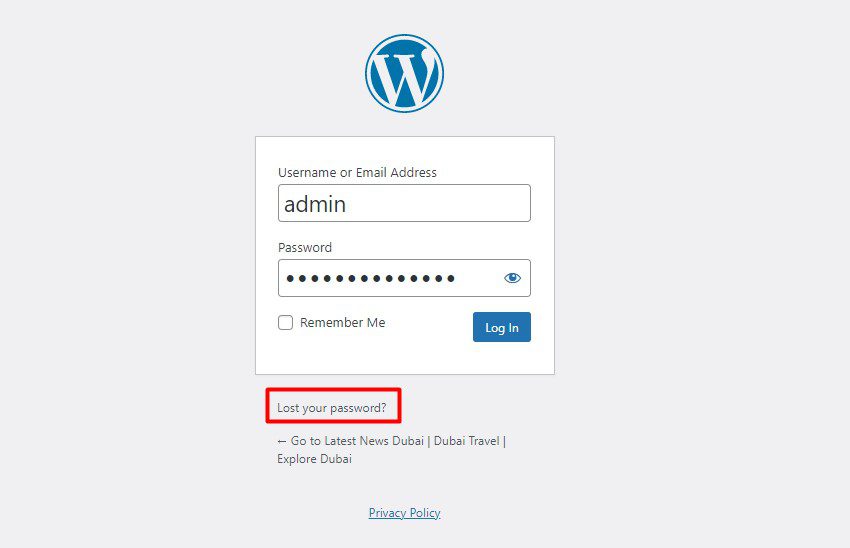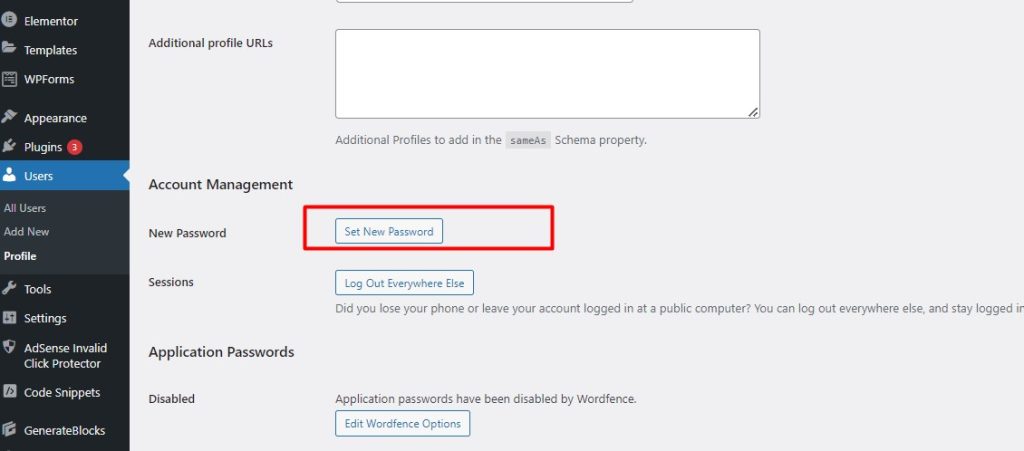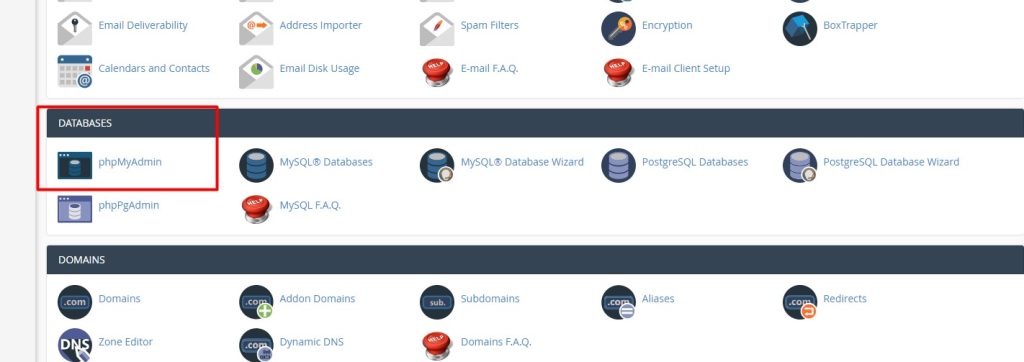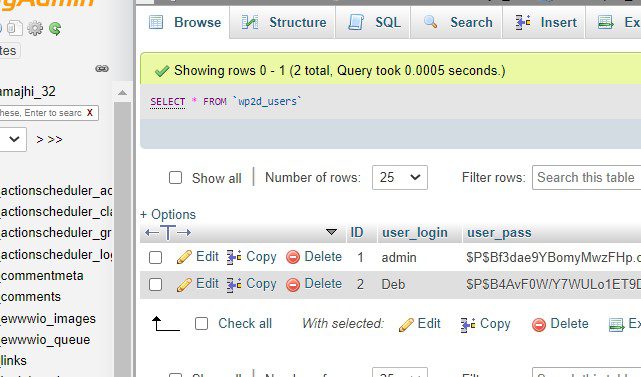The best way to recover your lost password is to write it down in a safe book. If you missed that already, here are the 5 Most popular tricks to recover your lost WordPress password.
- Use the “forgot your password” email recovering link
- Ask another admin to help you reset your password by editing your WordPress profile in the dashboard.
- Use cPanel (i.e. via phpMyAdmin or MySQL database)
- Use the WordPress functions(dot)php file
- Via the PHP script emergency password
Up next are a detailed explanation of the 5 Most popular tricks to recover your lost WordPress password. Following are WordPress Password security measures.
5 Most popular tricks to recover your lost WordPress password
Here are the detailed 5 Most popular tricks to recover your lost WordPress.
#1. Use the “forgot your password” email recovering link
This trick sends a password reset URL to your email. Then you can have a new password there.
Go to your WordPress login page(i.e. your http://WordPress.com/wp-admin domain name, and do the following:
- Locate the “lost your password?” Click it. You’ll land at a password reset page

- Enter either your admin email address or WordPress user name.
- Click on “Get New Password”
- Go to your admin email inbox. Open the link that was sent to you. Follow the instructions and have your WordPress Password reset.

If at any rate, you forget your admin email address or WordPress username, don’t fret, consider the next option.
#2. Ask another admin to help you Out
Here, you’ll have to reach out to a second WordPress admin user on your site to help you edit your profile and generate a new password for you. Contact a colleague admin to help you out by doing these:
- Let your colleague log in to the WordPress admin page. Open “Users,” and click on “all users.”
- Navigate to the Account Management section, locate the “set new password” and click on it.

- Let them share with you your new password.
- For security and a stronger password, change from the initial password to something more confidential and memorable. Preferably, book it down.
#3. Use cPanel (i.e. via phpMyAdmin or MySQL database)
This method only works when you have all the admin privileges which are the least you should have access to your website hosting; cPanel/web hosting control panel.
Use the phpMyAdmin from cPanel or contact your hosting provider for due support as the process may vary for different hosting providers.
Without further ado, let’s do it:
- log in to your hosting account and access cPanel, navigate to the Databases page and click on phpMyAdmin
- Inside your phpMyAdmin account, navigate through the list of database links displayed on the screen and click the WordPress database of your website.

- Locate the wp_users and click “Browse” at the right. You’ll land on a page that lists all the registered users on your site.

- Here, you should see your username, admin email, and password that belongs to your account.
- Select the user you wish to change and click edit.

- Now, you’re in:
- Change your password at the user_pass to what only you know and can remember.
- Next to the “user passes,” locate and delete the long list of alpha-numerics that are displayed on your screen.
- Enter your new password, and take cognizant of the cap lock that you used.
- Finally, select MD5 to encrypt your password for you. Double-check and save. That does it.
- log in via your WordPress /wp-admin URL with your new username and new password.
#4. Use the WordPress functions(dot)php File
Do not tamper with the core functions(dot)php files to avoid website compromise. if you’re not cleared on this page, contact a WordPress professional.
You’re to work only with the functions(dot)php files in the website theme directory.
For this method, you’ll need a third party; the FTP client.
- Locate the functions(dot)php file within your active theme’s directory (folder).
- Add or edit the wp_set_password line of code in your functions(dot)php file.
- Set the line of code as wp_set_password (‘sifideon, 4’). “4” is a sample of your user’s ID. The alphabets are your sample new code.
Always mix alpha-numerics, and symbols to create strong and unique passwords. Book it down for the memorial.
- Save the edits you made to the functions(dot)php file
- Use FTP to upload the edited file to your website
- After this, try to log into your WordPress site through your WordPress admin dashboard.
- Upload the original or updated version of the functions(dot)file that you edited.
- Use the FTP client to re-download the WordPress functions file.
- Remove the lines of codes that you used to reset your passwords
- Upload the original or updated WordPress file via FTP. Now you’re done.
#5. PHP script emergency Password Reset
This is not the brightest resort due to its high-security risk. However, Because it’s an available option, you’ll have to turn to it when all methods fail.
In this method, you’ll create a php file from an already existing script, then add it to your WordPress website core file.
You’ll need a WordPress admin email or Username. Keep in mind that this method will reset the administrative password. To abate some regrettable happening, follow these procedures to add to the emergency password reset script.
- Use the Emergency Password Reset Script to Copy the PHP script from the WordPress codex.
- Create a new file and Name it “emergency(dot)php” in your text editor
- Paste the script that you’ve copied from WordPress codex into the new file.
- make sure that the file contains your administrative information, then save it.
- Log onto your website hosting and control panel via FTP client and go to the root directory of your WordPress website.
- Upload the Emergency File

- Add the new file to your website root directory. Warning: don’t add it to the plug-in directory.
- Open a new browser tab and enter https://(dot)com/emergency.php.
- When you’re asked for a new admin username, you’ll create a new and strong password.
- Click “Update Options” and wait for it. You’ll receive a confirmation email with your new password in it.
After a successful password reset with clean access to your site, manually delete the emergency.php file from your site’s server to keep away security threats.
Easiest Ways to Recover Your Lost WordPress Password! Click To TweetHow to Protect Your WordPress Security Password
There are many ways to prevent your WordPress login password from getting lost. They are:
#1. Account management
If you’re not good at remembering passwords, I’ll advise that you use a Password manager for all your online accounts. You won’t need to memorize tons of passwords, and never have to try a password reset again.
An example of a such manager is memberPress and Last pass
2. Complex and Unique Passwords
Avoid guessable passwords like birthdays and phone numbers. This will attract unnecessary attacks on your account.
Here are tips to have yourself a complex and strong security password.
- Make your password at least 12 characters long or more if allowed.
- Include alphabets, Numbers, Caps lock, and symbols in your password creation.
- Use a random password generator. Examples are the inbuilt WordPress generator.
- Or you can use a third-party service like LastPass
#3. Avoid the mistake of Reusing your password in another account.
Yes, this makes you vulnerable to multiple account hacks.
Hackers use a database of passwords to try their way into the accounts that are found on compromised websites. A hacker can pass your security if they have your username or email address or a password that’s associated with your account.
#4. Two-Factor Authentication Login
The Two-Factor authentication login is one of the best ways to secure your WordPress Account.
Two-factor authentication login places a second security bridge to confirm the authentication of a user and it’s time sensitive.
The login time expires when you can’t provide the secondary codes. With this strategy, no one can access your WordPress Account without your permission.
The Two-factor authentication login is compatible with mobile phones and systems. The recommended WordPress plugin for a two-factor security check is iThemes Security Pro or make your choice here.
FAQs
You may not have exact characters for the codes if you didn’t book it elsewhere, but you can reset or change it.
The best way to recover your lost WordPress password is through the “forgot your password” prompt on your WordPress login page.
Wrapping it Up
The most tech-savvy person can and has been forgetting a series of passwords. It’s one of the unavoidable problems with users. But when it seems to have your world sinking, always refer to the 5 Most popular tricks to recover your lost WordPress password.
When you’re done recovering, try booking it down in a safe whether you’re using the account manager or not.
Read Also: Free Tools to Scan and Fix Vulnerabilities
We are dedicated to sharing useful content for WordPress websites in the business & personal communities. This includes any related topics indirectly related to WordPress, marketing, advertising, e-commerce, technology, or any other online subjects we feel would benefit our readers and customers.
Debashrita @ The WP Website Help Team

